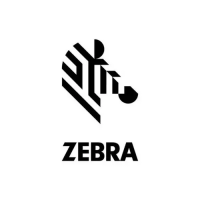DataWedge
70
• UTF-8 - A character encoding capable of encoding all possible characters, or code points, defined by
Unicode (default).
• Auto Character Set Preferred Order - In Auto Character Set Selection mode, the system will try to
decode the data in a preference order of character sets. The algorithm used is a best effort one. That is,
there could be cases where the data can be decoded from more than one character set. The first
character set from the preferred list which can decode the data successfully will be chosen to decode
the data and sent to the user. Any other character set that is in the list but lower in the preferred order,
would not be considered, even if the data could be successfully decoded using such character set.
The preferred character set and its preference order is configurable to the user through the Auto
Character Set Preferred Order menu. Users can change the order by dragging the icon for that menu
item. To delete an item, long press on an item and the Delete option will appear. To add a new item, tap
the menu icon at top right corner and options to add UTF-8 and GB2312 will appear.
• UTF-8 - A character encoding capable of encoding all possible characters, or code points, defined by
Unicode (default).
• GB2312 - Character set of the People's Republic of China, used for simplified Chinese characters.
• Auto Character Set Failure Option - If the system cannot find a character set from the preferred list
that can be used to successfully decode the data, the character set selected in Auto Character Set
Failure Option is used to decode the data and send to the user. If NONE is used, Null data is returned
as string data.
• NONE
• UTF-8 - A character encoding capable of encoding all possible characters, or code points, defined by
Unicode (default).
• ISO-8859-1 - Part of the ISO/IEC 8859 series of ASCII-based standard character encodings. It is
generally intended for Western European languages.
• Shift_JIS - Shift Japanese Industrial Standards (JIS) is a character encoding for the Japanese
language.
• GB18030 - Chinese coded character set that defines the required language and character support
necessary for software in China.
• 1D Quiet Zone Level - Sets the level of aggressiveness in decoding barcodes with a reduced quiet zone
(the area in front of and at the end of a barcode), and applies to symbologies enabled by a Reduced Quiet
Zone parameter. Because higher levels increase the decoding time and risk of misdecodes, Zebra strongly
recommends enabling only the symbologies which require higher quiet zone levels, and leaving Reduced
Quiet Zone disabled for all other symbologies.
Options are:
• 0 - The scanner performs normally in terms of quiet zone.
• 1 - The scanner performs more aggressively in terms of quiet zone (default).
• 2 - The scanner only requires one side EB (end of barcode) for decoding.
• 3 - The scanner decodes anything in terms of quiet zone or end of barcode.
• Adaptive Scanning - When adaptive scanning is enabled, the scan engine toggles between wide and
narrow, allowing the scan engine to decode barcodes based on the distance.
• Disable
• Enable (default).
• Beam Width - Beam Width is applicable only with linear scanners.
• Narrow
• Normal (default)
• Wide

